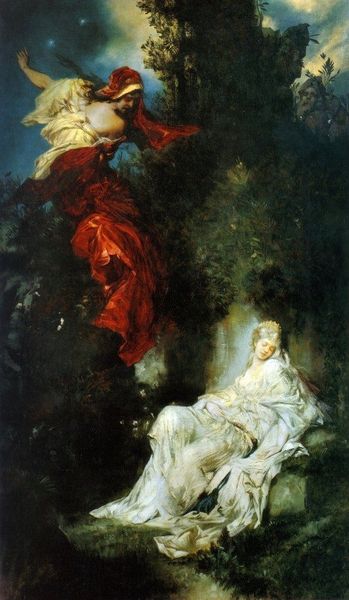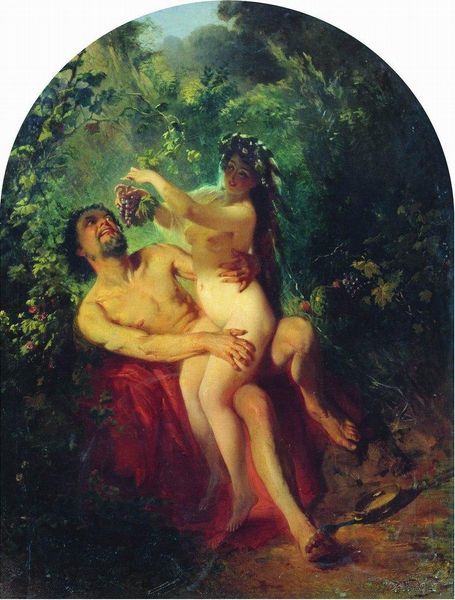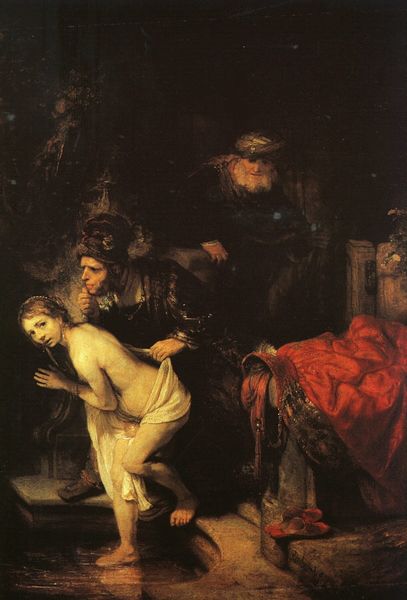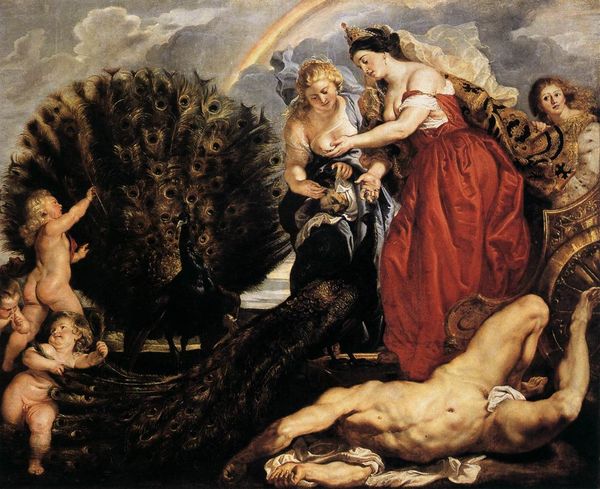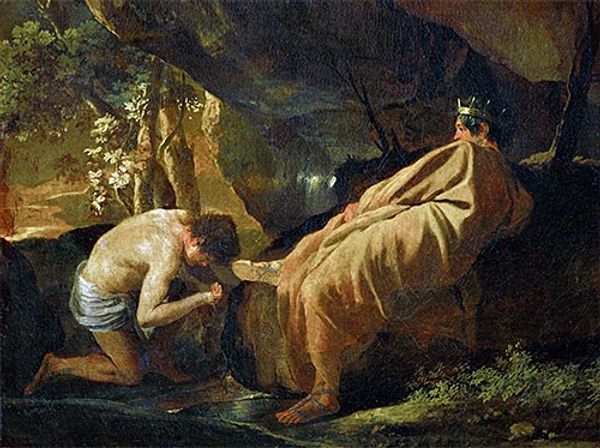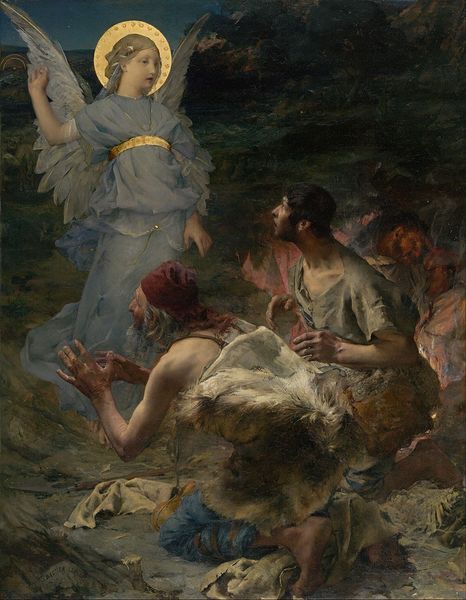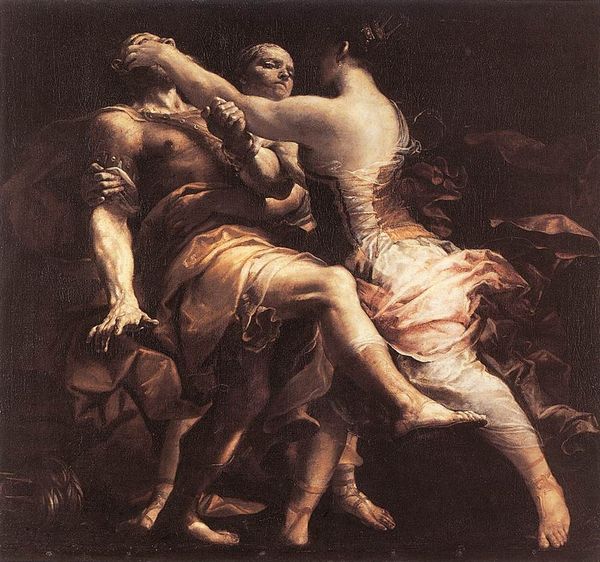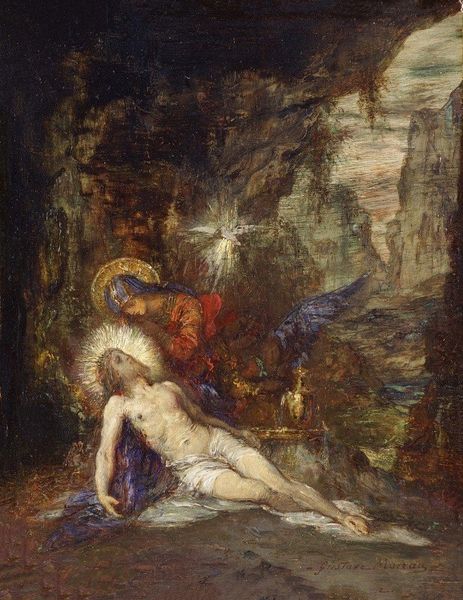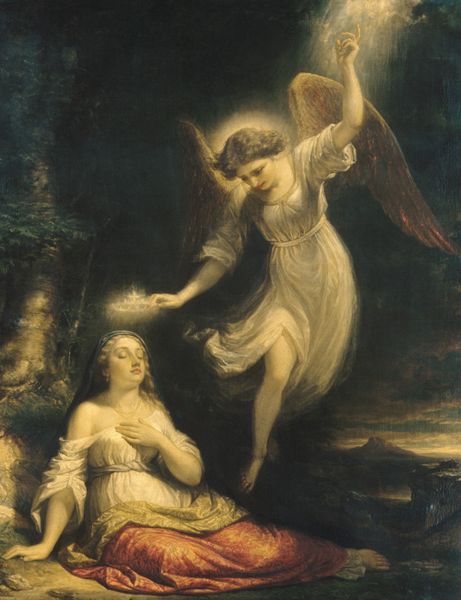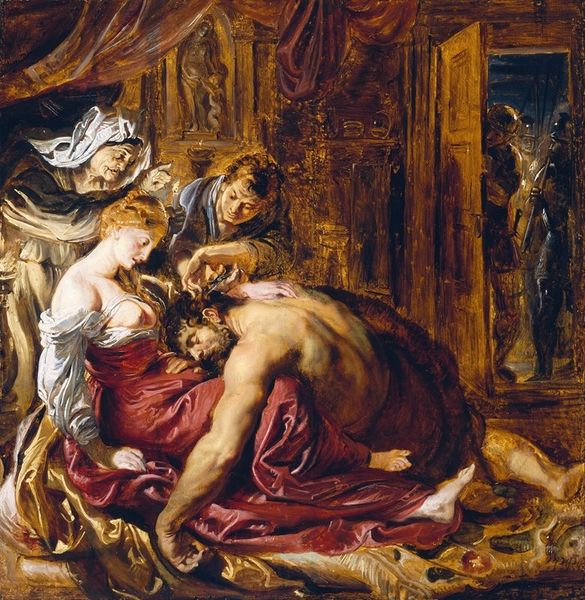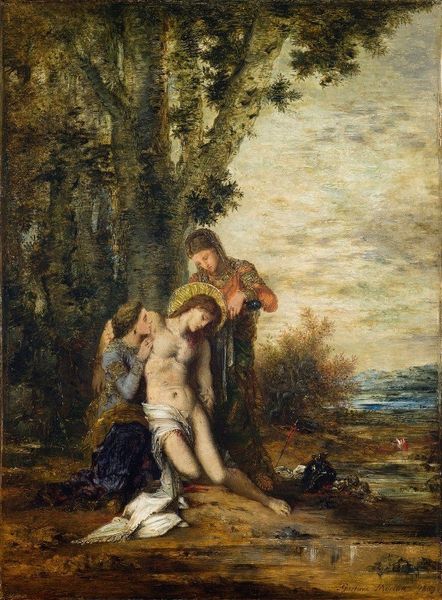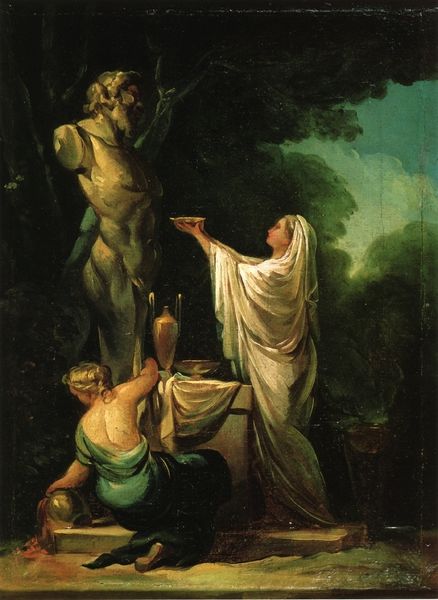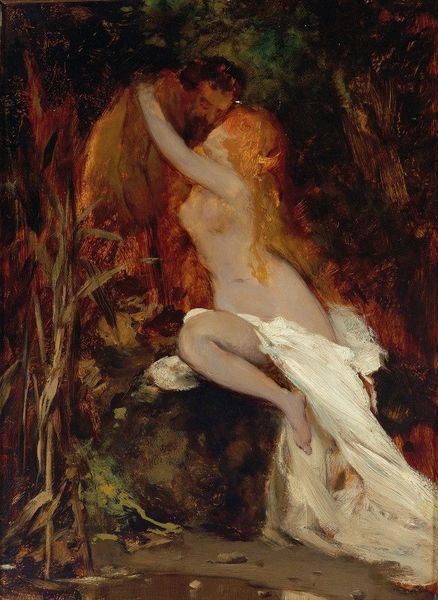
painting, oil-paint
#
allegory
#
narrative-art
#
painting
#
oil-paint
#
figuration
#
romanticism
#
mythology
#
history-painting
Copyright: Public Domain: Artvee
Curator: Before us, we have a striking canvas: "Snow White Receives the Poisoned Comb" by Hans Makart. Editor: A dense forest setting dominates my first impression; it creates a rather ominous and secretive mood, a theatrical backdrop for the two figures. Curator: Precisely. Makart was a master of stagecraft. Let’s look at the costuming of the figures here. Note the rich reds and golds versus Snow White's pale fabrics; the manipulation of the fabric suggests an emphasis on materiality that subtly communicates moral standing. Editor: Indeed. The comb, though, that is where the true symbolism lies. The poisoned comb is such a loaded image. Consider how hair is associated with beauty and identity. The act of poisoning the comb then isn't just a murder attempt; it's an attack on Snow White's very essence, her power as a young, beautiful woman. We're touching on core fairy tale fears about feminine jealousy and rivalry. Curator: And don't overlook the materials from which that comb would be crafted: ivory, bone, or even a more readily accessible wood transformed through careful, specialized labour. These objects are inherently of the everyday, even as they take center stage within this moment of high drama. It’s intriguing how readily familiar objects, available through acts of exchange, can be transformed into instruments of control. Editor: Right, and its power extends beyond just the physical realm. Hair-combing as a ritual; who is allowed to touch your hair signals intimate access and trustworthiness. So, the deceptiveness inherent in the act—an act of trust turned violently on its head—speaks volumes about broken social bonds and the evil Queen's insidiousness. Curator: The method of creating such a complexly layered narrative here, I would argue, underscores the very labor-intensive processes of production, that Makart brings the symbolic depth. The weaving together of themes – vanity, deception, mortality – emphasizes this cultural significance. Editor: Yes. It reminds us how potent these visual allegories have always been. This artwork is so relevant in our world, with constant pressures surrounding beauty. Curator: Reflecting on the means of both physical and symbolic constructions adds important depth to understanding Makart's approach here. Editor: Indeed, it brings a darker nuance to the romantic portrayal, making this artwork ever relevant to modern viewing and reading of symbolic language.
Comments
No comments
Be the first to comment and join the conversation on the ultimate creative platform.
